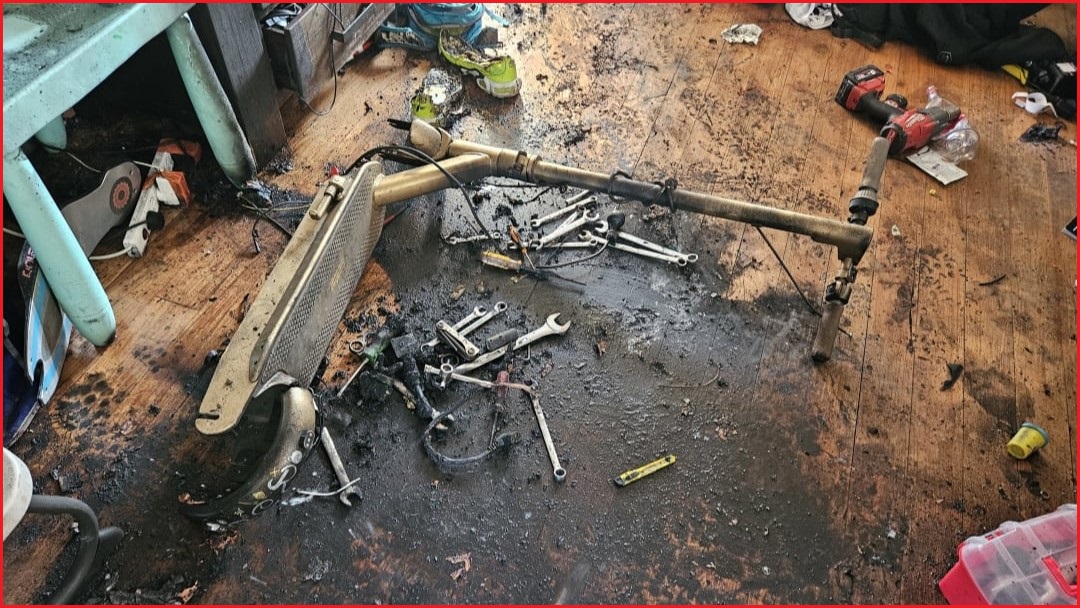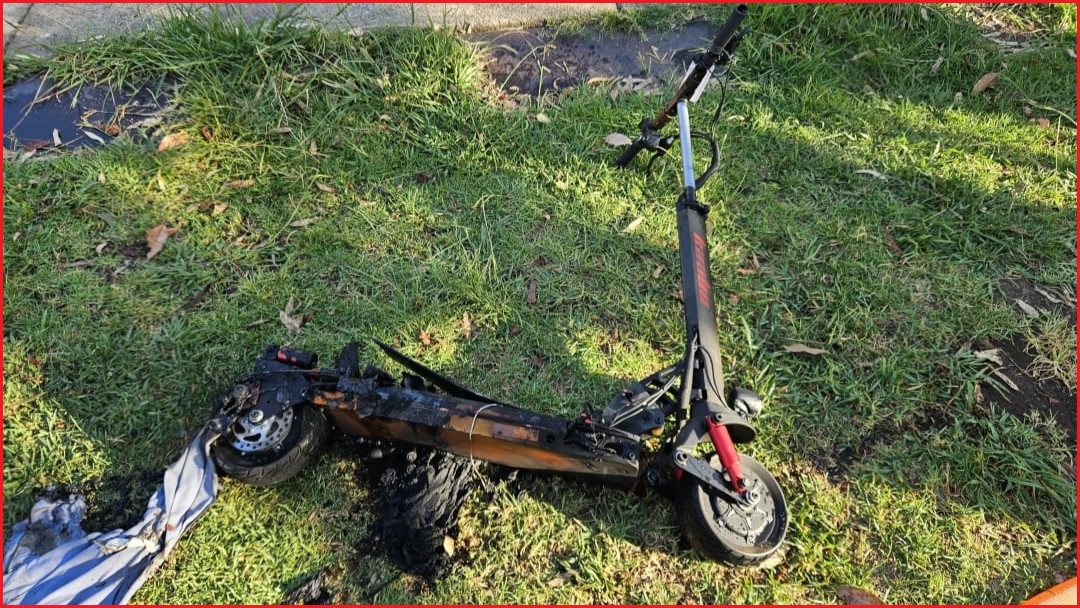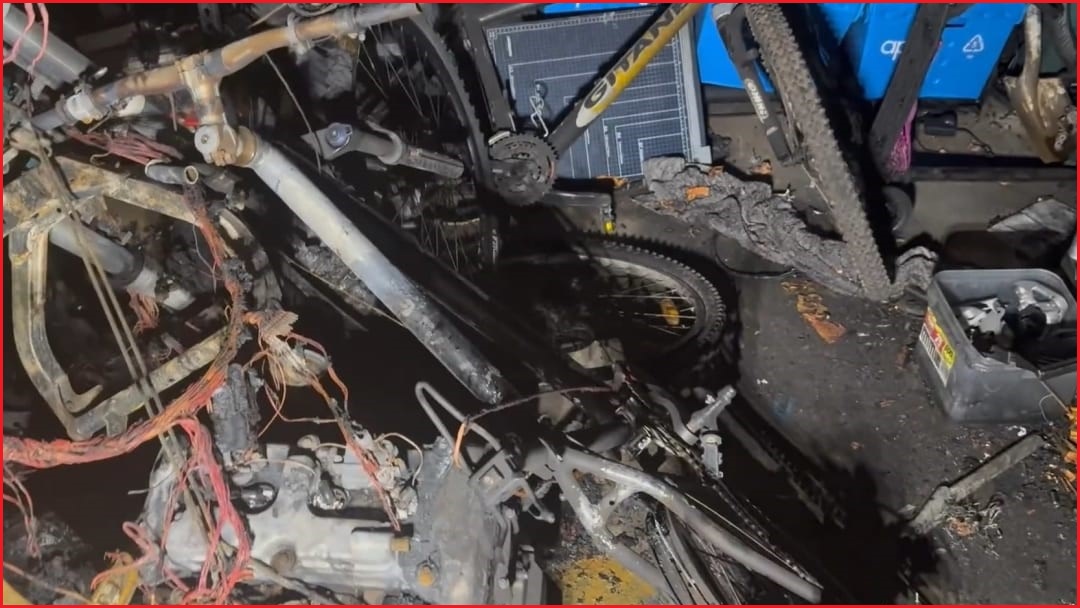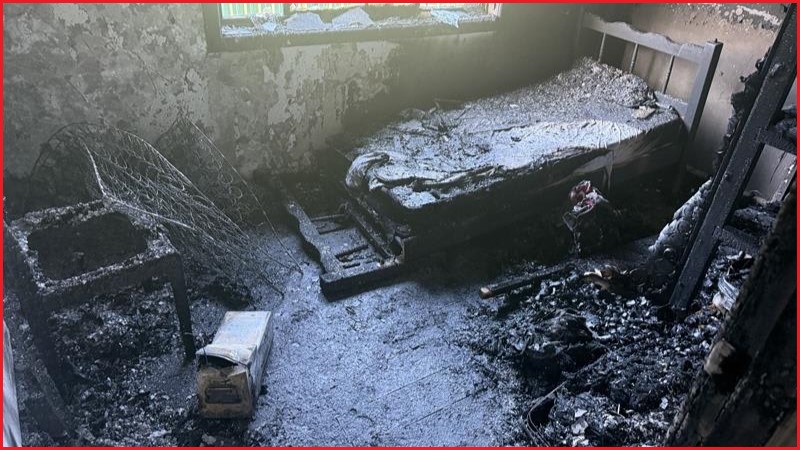Emergency services have warned of “an alarming spike” in lithium-ion battery fires after a Sydney man was killed by a blaze likely caused by an e-bike battery which had been left on an incompatible charger overnight.
Authorities were called to the fire at a house on Rowley Road in the western Sydney suburb of Guildford at around 5am on Tuesday morning, where a man trapped inside a burning bedroom died at the scene.
Five other people had already evacuated the home, which had no working smoke alarms, Fire and Rescue New South Wales (FRNSW) said.
Investigators and forensic experts said the e-bike battery in the deceased man’s room “was unable to absorb the energy generated by the charger and overheated, likely causing the fire”.
A report will now be prepared for the coroner.
If not used, stored, or disposed of correctly, rechargeable lithium-ion batteries can explode and cause significant harm when they overheat or become damaged.
Fatal fire follows spate of battery blazes
There have already been at least 28 confirmed lithium-ion battery fires in NSW alone since the start of 2025.
In the first week of February, local authorities said they responded to four separate e-bike and e-scooter battery fires in a single 12-hour period.
In one of those incidents, a man was injured by shrapnel in a battery explosion while another suffered burns and smoke inhalation.
NSW has seen a rise in suspected lithium-ion blazes in recent years: there were 165 reports of such incidents in 2022, which rose to 272 reports in 2023, and 323 in 2024.

NSW authorities say they responded to four lithium-ion battery fires in a 12-hour period in the first week of February. Photo: FRNSW / Supplied
Tuesday's fatal fire at Guildford came just one day after a man was left with serious burns and was airlifted to hospital after a house fire at Umina on the NSW Central Coast, also believed to have been caused by a lithium-ion battery explosion.
FRNSW superintendent Adam Dewberry said if not used correctly, lithium-ion batteries found in e-bikes and e-scooters could be “extremely dangerous”.
“They can ignite with explosive force, issuing toxic gas, and causing intense fires that spread rapidly,” he said.
“If a fire involving a lithium-ion battery occurs, it literally becomes an explosive device.
“When that happens, we urge people to get out, stay out, and call Triple Zero (000).”
'Almost one fire each day’
While Fire Rescue Victoria (FRV) did not have similar data to share, it told Information Age its firefighters were “responding to almost one fire each day caused by rechargeable lithium-ion batteries”.
Melbourne man Jamie Universita, whose garage was damaged when his e-bike battery exploded in November 2024, said he was not aware the battery could cause such damage.
“I really urge everyone to buy from a reputable brand and to pay close attention to them,” he told FRV in December.

There have been at least 28 confirmed lithium-ion battery fires in NSW alone since the start of 2025. Photo: FRNSW / Supplied
The commissioner of FRNSW, Jeremy Fewtrell, said lithium-ion battery fires were on the rise because Australians were “still taking dangerous risks in their homes”.
“Please, heed our advice — lithium-ion fires are happening to households almost every day,” he said.
The NSW government implemented new safety standards for lithium-ion batteries powering e-micromobility vehicles such as e-bikes, e-scooters, and e-skateboards on 1 February.
It said consumers purchasing such devices would also be provided with new safety information about the products from late February, with retailers and manufacturers to face fines of up to $5,500 per breach if that guidance is not given to customers.
Do not modify chargers or batteries, consumers told
Authorities said at-home modifications to lithium-ion batteries and related chargers had contributed to numerous fires in recent months, and urged consumers not to create their own makeshift power systems.
A garage fire at Caringbah in Sydney’s south on 11 February was caused by a homemade power supply between a light fitting and an e-bike battery, authorities said.
There were no reports of injuries in that incident, but investigators said the DIY charging system had caused the battery to overheat and explode.

A homemade power supply caused this e-bike battery to explode in the Sydney suburb of Caringbah. Photo: FRNSW / Supplied
A homemade e-bike battery pack was believed to have caused a unit fire in the Sydney suburb of Granville earlier this month.
An electric vehicle fire in the Melbourne suburb of Glen Waverley in September 2024 was also found to have been caused by “a travel adapter connected to an aftermarket charging lead”, authorities said at the time.
“I cannot say this strongly enough — do not modify your chargers or batteries, do not make your own batteries,” said Dewberry from FRNSW.
Safely using (and losing) lithium-ion batteries
State and territory authorities have urged Australians not to sleep or leave the house while their lithium-ion batteries are charging, to avoid leaving them constantly on charge, and to make sure they have working smoke alarms in their home.
A recent NSW government survey found 73 per cent of respondents charged their devices while unattended, with 64 per cent leaving devices plugged in after they had been charged.
Buying technology from reputable manufacturers and retailers while avoiding cheap and potentially substandard devices was also encouraged by emergency services.
Batteries should also not be disposed of with typical household rubbish, as they often start fires in garbage trucks or at waste facilities when they are compacted.
Australian waste and recycling bodies have called from more action from governments on that issue, as some businesses have faced “daily fires in bins, trucks and recycling facilities”.










